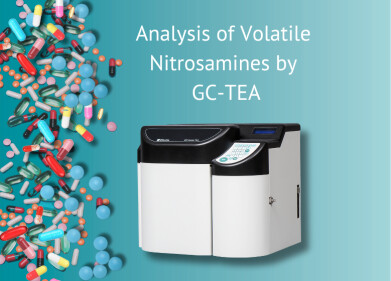GC-MS
Finding an Oil Spill Remedy with GC-MS
Jan 12 2020
Oil spills can cause significant environmental and ecosystem damage. In 2019 it is estimated that approximately 1000 tonnes of oil was lost to the environment through accidents or accidental discharges. The largest oil spill occurred in North America due to vessel collision and around 700 tonnes were released to the environment.
When spills occur, it is important that the spill is stopped and the oil removed from the environment as quickly as possible. It is important that the products used to contain and remove the oil do not damage the environment or ecosystem they are used in. One product that is gaining attention as a natural product to help absorb oil from spills is chitosan film. A recent paper published in the journal Water reports on how researchers have modified chitosan films with fruit extracts to make a better oil absorbance film - with chromatography helping to identify key components.
Chitosan films - insects and seashells
Chitin is a natural polymer of N-acetylglucosamine, a derivative of glucose. It is found in the cell walls of certain fungi and in the exoskeletons of crustaceans (such as crabs and shrimps) and insects. Chitin is also found in fish scales, the beaks of some cephalopods and in the tongues that molluscs use to feed. It is sometimes compared to the protein keratin in terms of its function.
Chitosan is a linear polysaccharide or polymer that is made from chitin. It is produced commercially by the deacetylation of chitin. Chitosan is made by treating chitin shells with an alkali such as sodium hydroxide. Chitosan has many commercial uses including as a fining agent in winemaking, as a biopesticide in organic agriculture and as a filtration agent in water processes. It has also been used as an adsorbent to remove metals and oils from water.
Fruit flavoured oil removal
Researchers have found that combining chitosan with additives can increase its effectiveness in some applications. In the research referenced above the team wanted to develop oil sorbent materials based on chitosan modified with natural extracts from cranberries, blueberries and several other fruits. They aimed to test their work by measuring the new material’s sorption capacity using gas chromatography-mass spectrometry and several other analytical techniques. The use of chromatography to analyse biological samples is discussed in the article, Proteins Under Pressure.
The research team found that chitosan modified with natural extracts was biodegradable and could be used in oil spill applications. They found that the films they made extracted oil from seawater. The improvement of the sorption capacity is due to the hydrophobic interaction between the chitosan and polyphenols from the fruit extracts which increase the affinity to the oil. GC-MS confirmed the increased oil sorption capacity of the modified chitosan.
Events
Jan 20 2025 Amsterdam, Netherlands
Feb 03 2025 Dubai, UAE
Feb 05 2025 Guangzhou, China
Mar 01 2025 Boston, MA, USA
Mar 04 2025 Berlin, Germany














